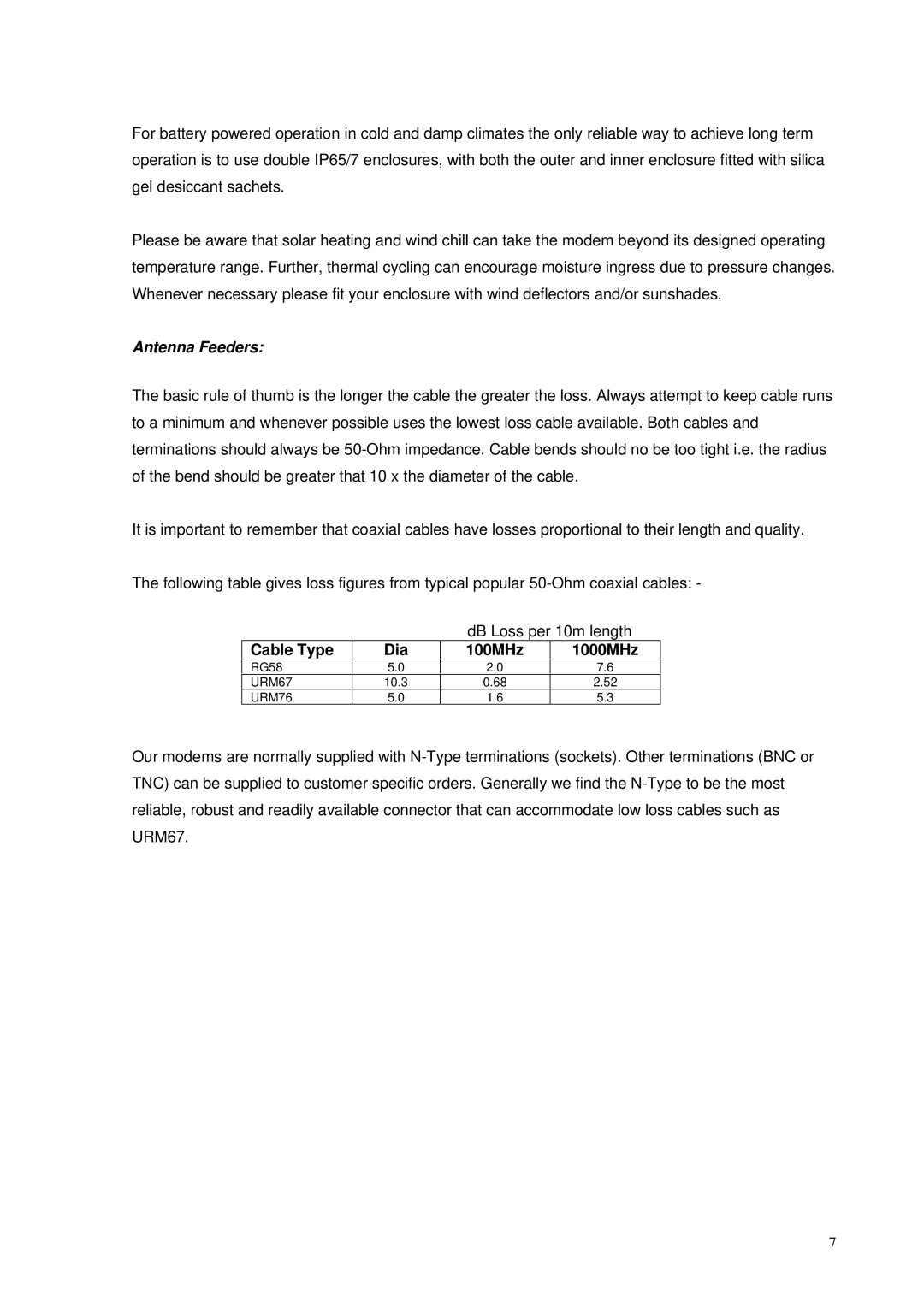For battery powered operation in cold and damp climates the only reliable way to achieve long term operation is to use double IP65/7 enclosures, with both the outer and inner enclosure fitted with silica gel desiccant sachets.
Please be aware that solar heating and wind chill can take the modem beyond its designed operating temperature range. Further, thermal cycling can encourage moisture ingress due to pressure changes. Whenever necessary please fit your enclosure with wind deflectors and/or sunshades.
Antenna Feeders:
The basic rule of thumb is the longer the cable the greater the loss. Always attempt to keep cable runs to a minimum and whenever possible uses the lowest loss cable available. Both cables and terminations should always be
It is important to remember that coaxial cables have losses proportional to their length and quality.
The following table gives loss figures from typical popular
dB Loss per 10m length
Cable Type | Dia | 100MHz | 1000MHz |
RG58 | 5.0 | 2.0 | 7.6 |
URM67 | 10.3 | 0.68 | 2.52 |
URM76 | 5.0 | 1.6 | 5.3 |
Our modems are normally supplied with
7
